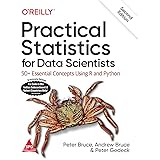Ogive curve in R
Ogive curve in R, It is a graph plotted for the variate values and their corresponding cumulative frequencies of a frequency distribution.
The sum of all preceding frequencies up to this point is referred to as cumulative frequency.
Its shape is just like elongated S.
An ogive curve is prepared either for more than type or less than type distribution.
Less than Ogive
A class’s frequency is increased by adding the frequencies of all preceding classes.
Greater than or More than Ogive
A class’s frequency is increased by adding the frequencies of all succeeding classes.
Deep Neural Network in R » Keras & Tensor Flow
What are the uses of ogive curve?
To find the median of a set of data, the Ogive Graph or cumulative frequency graphs are employed.
We can simply find the median value if both the less than and more than cumulative frequency curves are displayed on the same graph.
Ogive curve is also useful in finding out quartiles, deciles, percentiles, etc…
At what point the ogives for more than type and less than type distribution intersect?
The ogives for more than type and less than type distribution intersect at the median.
Let’s have a look at how to make a cumulative frequency graph with R.
Decision Trees in R » Classification & Regression »
Ogive curve in R
Let’s start by installing the package.
#install.packages(“agricolae”)
library(agricolae) data(growth)
For charting, we can use the growth data set.
h<-graph.freq(growth$height,plot=FALSE) points<-ogive.freq(h,col="red",frame=FALSE, xlab="Height", ylab="Accumulated relative frequency", main="ogive") plot(points,type="b",pch=19,las=1,bty="l")

Principal component analysis (PCA) in R »





